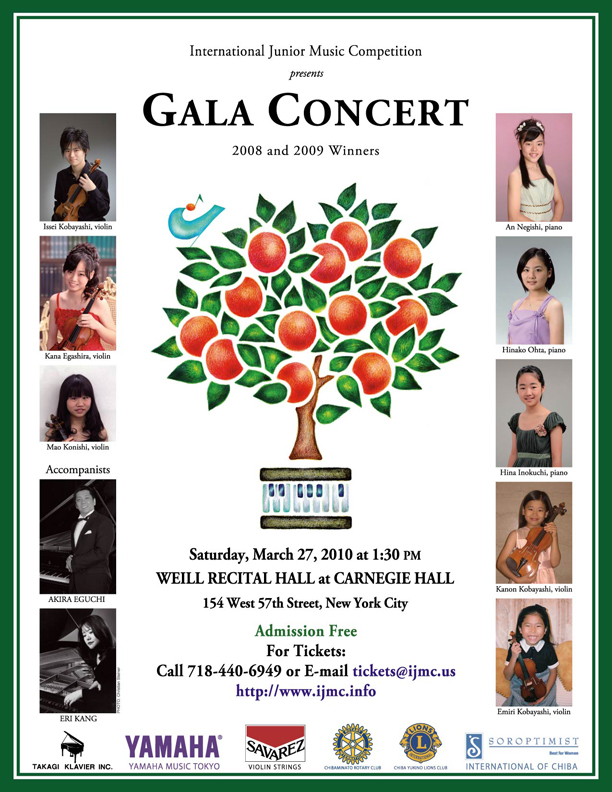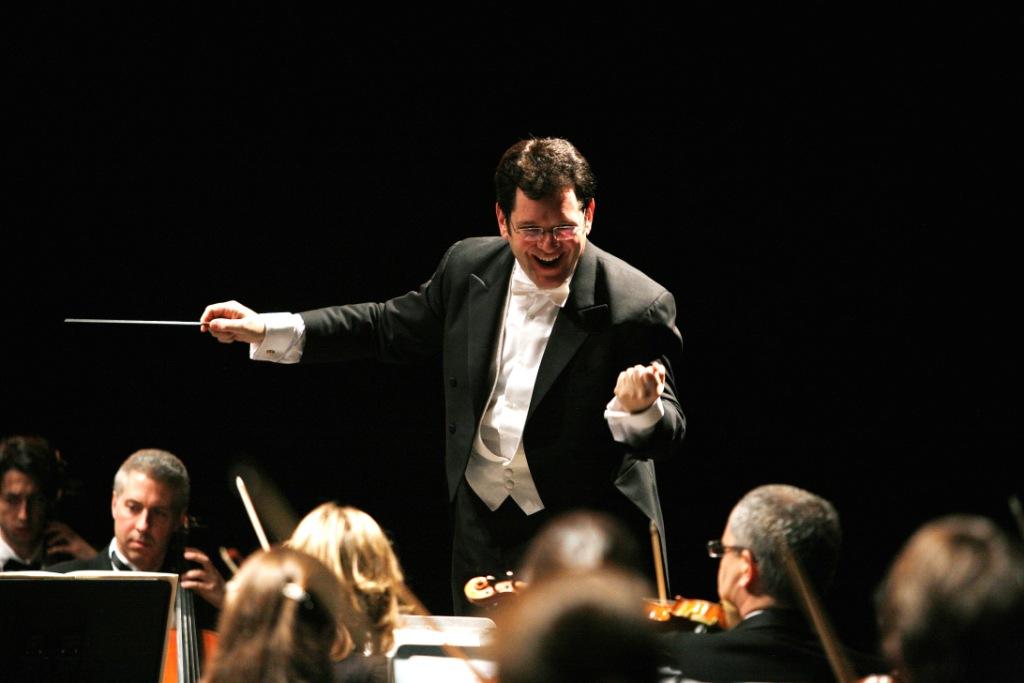Presented by Distinguished Concerts International -New York, DCINY
Weill Recital Hall at Carnegie Hall, New York, NY
April 11, 2010
From the west side of the United States to the west side of Manhattan, an impressive bunch of students from southern California, all part of an organization called Junior Chamber Music –founded and directed by Susan Boettger—performed extremely well-prepared, well-chosen music at Carnegie’s Weill Recital Hall. The concert was presented by Distinguished Concerts International New York.
One of the most impressive performances on the program was Schumann’s Piano Quintet (the last two movements)—not just for its ensemble excellence and finesse in notoriously tricky passages and transitions, but for all its musical insights. Individually, the students are quite young and inexperienced with this music—violinists Lucas Stratmann and Hao Zhao are middle school-aged, Iona Batchelder is a 6th grade cellist, and violist Amanda Lin and pianist Jessie Wang are high school freshman— but collectively, they had a rare unity of interpretation and sounded more professional than they probably knew they were capable. In the Scherzo, the many up-and-down scales—which can often sound tedious in student performances, were exquisitely shaped, and the second theme was tender, showing a mature contrast in tone quality and expression.
The Mendelssohn piano trios received plenty of exposure on the program—G. Theory and the Vision and NYC trios performed movements admirably—with pianist Weston Mizumoto a standout for his excellent finger work in the D minor’s technically demanding first movement. Two other favorites of the repertoire, the Brahms Opus 8 and the Arensky were also excellent choices and given passionate performances by the Brahms and Angeles Trios. Despite small intonation lapses and some ordinary phrasing, Trio con Lancio’s playing in Martinu’s excellent Sonata for Flute, Violin and Piano was solidly together throughout.
Swing Shift, by Kenji Bunch, was another highlight of the program. I can see why the inventive 4th and 6th movements were selected for this group. Violinist Paya Sarraf, cellist Alec Hon and pianist Primitivo Cervantes reveled in the music’s Rock-Minimalistic beats, and the audience was swinging along with them. Excellent ensemble-playing and some intonation difficulties permeated the CalDuo performance of Duos for Flute and Clarinet by Robert Muczynski, and Jack McFadden-Talbot’s Concern, in its world premiere, was—considering an older, more experienced group at hand— overly simple in its use of rhythm and counterpoint. The mezzo Hannah McDermott is a wonderful talent with a lovely, expressive voice; she was teamed-up with flutist Taylor Weary and pianist Leslie Wu for a very fine performance of three songs from Deepest Desire by Jake Heggie.
The chemistry was palpable between violinist Judith Yu and cellist Allan Hon in the Tchaikovsky Piano Trio in A minor (Variation movement); their physical gestures, vibrato, and bow strokes were always matching. They exuded a lush, professionally robust string sound and a finely-tuned sense of pitch. Renee Yang did an excellent job with the technical demands of the piano part, although she needs some more variety in her phrasing and dynamics. The group’s overall performance was engaging and polished, with well-timed transitions of tempo. Junior Chamber Music and all the ensembles on this program should be very proud of what they are accomplishing.


 The Chihara Trio, formed in 2009 and comprised of Penn State School of Music faculty members Anthony J. Costa on clarinet, violist Timothy Deighton and pianist Enrico Elisi, performed a diverse array of works that were sometimes interrelated in subtle, yet special ways. The clarinet/viola/piano trio repertoire isn’t often heard, so the forming of this ensemble was a great idea. The trio’s inaugural season has included performances throughout Pennsylvania and Maryland, and they made their New York debut with this concert.
The Chihara Trio, formed in 2009 and comprised of Penn State School of Music faculty members Anthony J. Costa on clarinet, violist Timothy Deighton and pianist Enrico Elisi, performed a diverse array of works that were sometimes interrelated in subtle, yet special ways. The clarinet/viola/piano trio repertoire isn’t often heard, so the forming of this ensemble was a great idea. The trio’s inaugural season has included performances throughout Pennsylvania and Maryland, and they made their New York debut with this concert.
![Mamlok_-_fotographer_Simon_Pauly_MÀrz_09_011_sm[1]](https://www.nyconcertreview.com/blog/wp-content/uploads/blog_images/Mamlok_-_fotographer_Simon_Pauly_MÀrz_09_011_sm1.jpg)